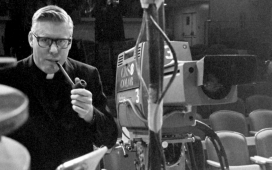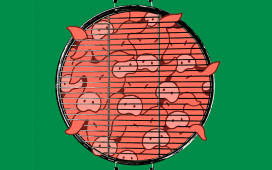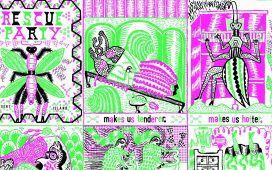In 1981, the British critic V. S. Pritchett published a review of Salman Rushdie’s second novel, “Midnight’s Children,” a political satire about a boy born in India as the country shifts from colonial rule to independence. Rushdie elides the typical feints of historical fiction and creates a crisp allegorical vision of a consequential national moment. The novel won that year’s Booker Prize, receiving acclaim for its evocative mingling of historical fact and magical realism. “Like García Márquez in ‘One Hundred Years of Solitude,’ ” Pritchett writes, Rushdie “weaves a whole people’s capacity for carrying its inherited myths—and new ones that it goes on generating—into a kind of magic carpet. The human swarm swarms in every man and woman as they make their bid for life.” Ultimately, the critic notes, it’s a tale about the connection between storytelling and history, and the ramifications of the narratives we’re bequeathed by our families, our communities, and our culture.
Sign up for Classics, a twice-weekly newsletter featuring notable pieces from the past.
This week, we’re bringing you a selection of contemporaneous appraisals of writers and reviews of classic novels. In “Remembering W. H. Auden,” Hannah Arendt examines the complex personality behind the poetry. In “A House Divided,” from 1987, Judith Thurman explores the intricacies of race and familial love in Toni Morrison’s “Beloved.” (The novelist “treats the past as if it were one of those luminous old scenes painted on dark glass—the scene of a disaster, like the burning of Parliament or the eruption of Krakatoa—and she breaks the glass, and recomposes it in a disjointed and puzzling modern form. As the reader struggles with its fragments and mysteries, he keeps being startled by flashes of his own reflection in them.”) In “Don’t Shoot the Book-Reviewer; He’s Doing the Best He Can,” from 1939, Clifton Fadiman considers the innovative literary style of James Joyce’s final novel, “Finnegans Wake.” In “Expeditions to Gilead and Seegard,” John Updike writes about the bleak dystopia of Margaret Atwood’s “The Handmaid’s Tale.” Finally, in a review from 1951, S. N. Behrman contemplates the symbolism behind J. D. Salinger’s début novel, “The Catcher in the Rye.” Of the protagonist, he writes, “It is his self-communings that are tragic and touching—a dark whirlpool churning fiercely below the unflagging hilarity of his surface activities. Holden’s difficulties affect his nervous system but never his vision. It is the vision of an innocent.”
—Erin Overbey, archive editor














